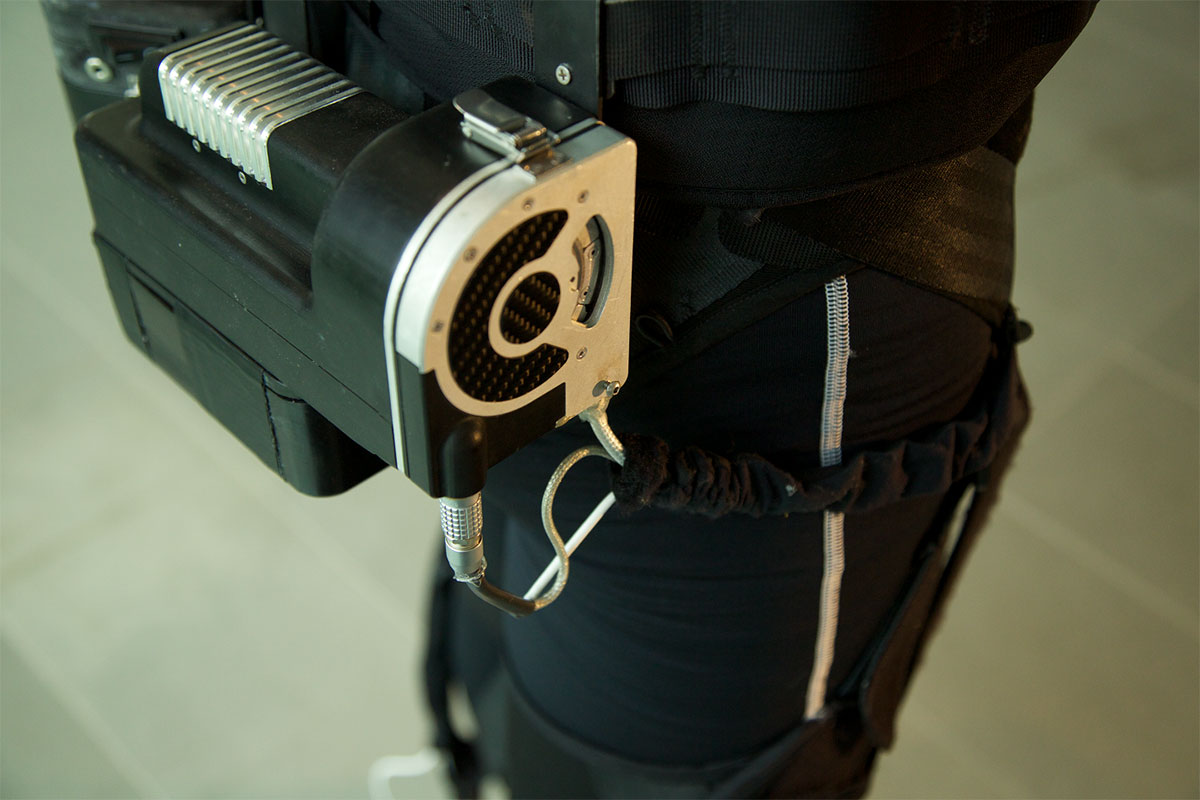Harvard Is Creating a Wearable Robot

photo provided to bostonmagazine.com
Imagine a future where people can wear an Iron Man-like suit concealed underneath clothing; a suit that could help soldiers walk further with more stamina, or help the elderly or physically disabled stay mobile longer. Well, thanks to researchers over at Harvard, the future is here.
The Wyss Institute for Biology Inspired Engineering was awarded $2.9 million from the Defense Advanced Research Projects Agency (DARPA) to develop a wearable robot, otherwise known as the “Soft Exosuit.” The smart suit is designed to be embedded into a soldier’s uniform, allowing the wearer to walk more, fatigue less, and even assist with heavy lifting. However, the military is not the only intended audience for the suit. The smart suit is also designed to be worn underneath everyday clothing to assist individuals with limited mobility.
“If we can help reduce the risk and injury for soldiers or minimize the muscle work for people with reduced muscle function, there will definitely be a positive effect for the health care system,” says Conor Walsh, Wyss Institute core faculty member and assistant professor at Harvard’s School of Engineering and Applied Sciences.
The lightweight smart suit was made to overcome the challenges a traditional heavier exoskeleton suit may have. The Soft Exosuit will weigh six kilograms and have soft, functional textiles that can be worn as a pair of pants, a belt, or a backpack. It’s designed to mimic the action of leg muscles and tendons when a person walks and provides small but carefully timed assistance at the joints of the legs without restricting movement.
“Our design approach is to put the minimal amount of weight on the legs, and put the rest around the center of the body,” Walsh says. “I think that will allow us to have a more practical system.”
The Soft Exosuit embeds artificial muscles inside the textiles of the suit, which work in conjunction with the wearer’s muscles. For example, if the suit is being used to help assist a person with weak ankle joints, the artificial muscles will work with the ankle muscles. The suit itself does about 15 to 20 percent of the work, which will allow muscles to be less stressed and work for a longer period of time.
Walsh says that the wearable robot has been in development for two years, and it is expected to take another two years before it will be used in the military or in hospitals.
Walsh and his team of developers have already completed the initial phase developing the basic technologies for the program. The next stage, he says, is to improve the system integration optimization phase by making the smart suit lighter, more efficient, and easier to take off.
“We really need to make this a more practical system,” Walsh says.


